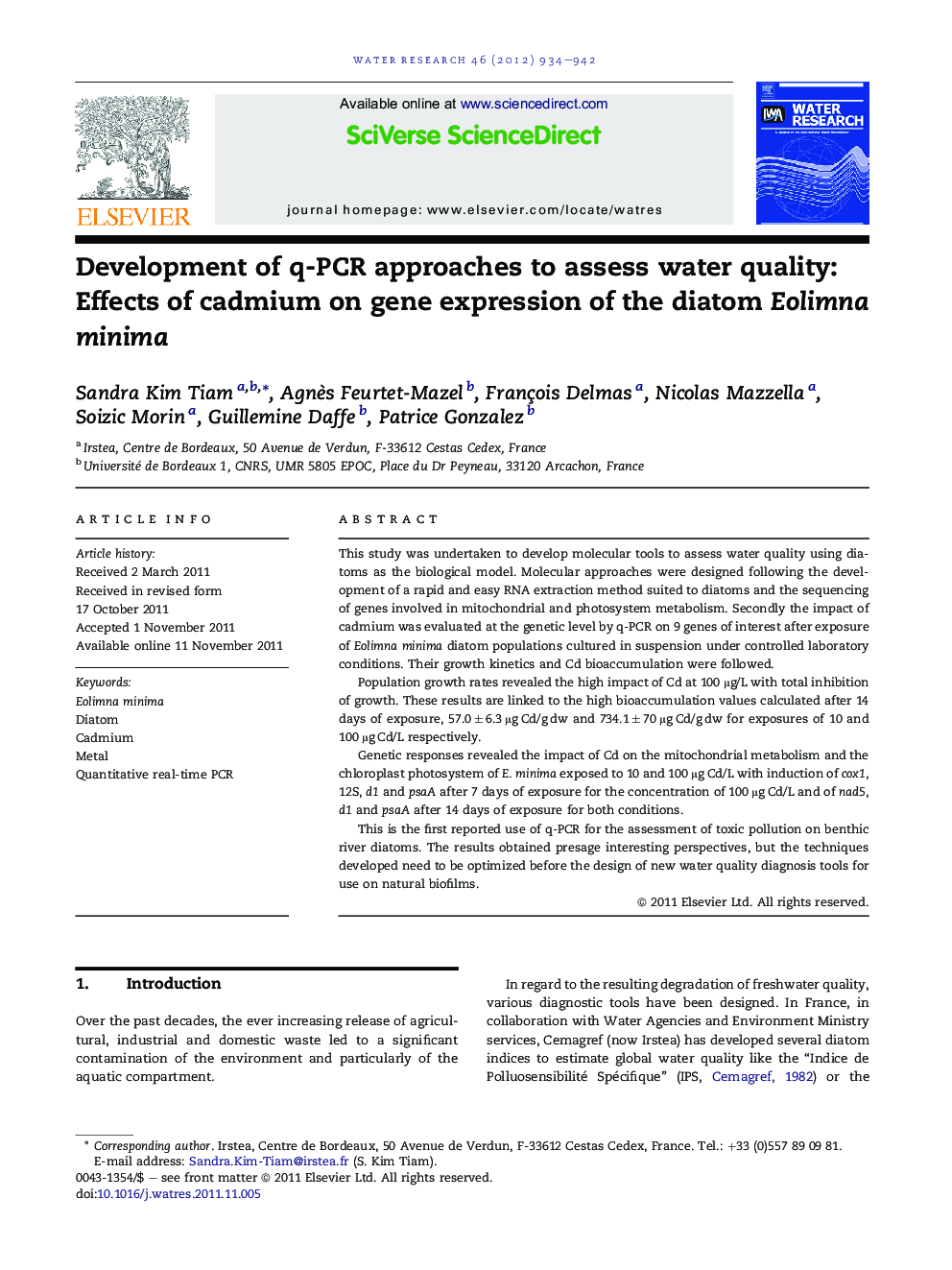| کد مقاله | کد نشریه | سال انتشار | مقاله انگلیسی | نسخه تمام متن |
|---|---|---|---|---|
| 4482862 | 1316872 | 2012 | 9 صفحه PDF | دانلود رایگان |

This study was undertaken to develop molecular tools to assess water quality using diatoms as the biological model. Molecular approaches were designed following the development of a rapid and easy RNA extraction method suited to diatoms and the sequencing of genes involved in mitochondrial and photosystem metabolism. Secondly the impact of cadmium was evaluated at the genetic level by q-PCR on 9 genes of interest after exposure of Eolimna minima diatom populations cultured in suspension under controlled laboratory conditions. Their growth kinetics and Cd bioaccumulation were followed.Population growth rates revealed the high impact of Cd at 100 μg/L with total inhibition of growth. These results are linked to the high bioaccumulation values calculated after 14 days of exposure, 57.0 ± 6.3 μg Cd/g dw and 734.1 ± 70 μg Cd/g dw for exposures of 10 and 100 μg Cd/L respectively.Genetic responses revealed the impact of Cd on the mitochondrial metabolism and the chloroplast photosystem of E. minima exposed to 10 and 100 μg Cd/L with induction of cox1, 12S, d1 and psaA after 7 days of exposure for the concentration of 100 μg Cd/L and of nad5, d1 and psaA after 14 days of exposure for both conditions.This is the first reported use of q-PCR for the assessment of toxic pollution on benthic river diatoms. The results obtained presage interesting perspectives, but the techniques developed need to be optimized before the design of new water quality diagnosis tools for use on natural biofilms.
Figure optionsDownload high-quality image (92 K)Download as PowerPoint slideHighlights
► We developed an efficient, quick and easy RNA extraction method for diatoms.
► We sequenced genes of interest and developed q-PCR primers for the diatom E. minima.
► We shown impacts of Cd at mitochondrial and photosystem levels using q-PCR tools.
► We showed responses at genetic level for both level of exposure: 10 and 100 μg Cd/L.
► This is the first reported use of q-PCR for the assessment of toxic pollution on benthic river diatoms.
Journal: Water Research - Volume 46, Issue 4, 15 March 2012, Pages 934–942